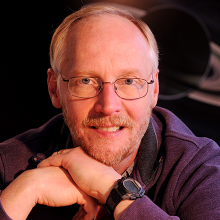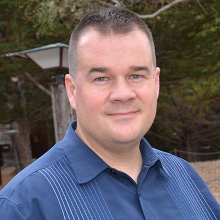
Dr. Alan Stern is a planetary scientist, space program executive, aerospace consultant, and author. He has been on the science teams of 29 space missions and has led on 14 of those, including his role as Principal Investigator on NASA’s New Horizons mission to the Pluto system and the Kuiper Belt. In both 2007 and 2016, he was named to the Time 100. In 2007, he was appointed NASA’s chief of all science missions. Since 2009, he has been an Associate Vice President and Special Assistant to the President at the Southwest Research Institute. Additionally, from 2008-2012 he served on the board of directors of the Challenger Center for Space Science Education and as the Chief Scientist and Mission Architect for Moon Express from 2010-2013. From 2011- 2013, he also served as the Director of the Florida Space Institute. Dr. Stern currently serves as the chief scientist of World View, a near-space ballooning company. Since 2008, Dr. Stern has had his own aerospace consulting practice. His current and former consulting clients include Jeff Bezos’s Blue Origin, Richard Branson’s Virgin Galactic, Naveen Jain’s Moon Express Google Lunar X-Prize team, Ball Aerospace, Paragon Space Development Corporation, the NASTAR Center, Embry Riddle Aeronautical University, and the Johns Hopkins University. Dr. Stern serves on the board of directors of the Commercial Spaceflight Federation. Dr. Stern has published more than 230 technical papers and 40 popular articles. He has given more than 300 technical talks and more than 150 popular lectures and speeches about astronomy and the space program. He has written several books, including The U.S. Space Program After Challenger (Franklin-Watts, 1987), Pluto and Charon: Ice Worlds on the Ragged Edge of the Solar System (Wiley 1997, 2005), and Chasing New Horizons (Picador 2018). Additionally, he has served as editor on six technical volumes and three collections of scientific popularizations: Our Worlds (Cambridge, 1998), Our Universe (Cambridge, 2000), and Worlds Beyond (Cambridge, 2003).

SETI Institute astronomer Dr. Mark Showalter studies the dynamics of rings and small moons in the Solar System. Known for his persistence in planetary image analysis, Mark's early work with Voyager data led to the discoveries of Jupiter's faint, outer "gossamer" rings and Saturn's tiny ring-moon, Pan. Starting in 2003, his work with the Hubble Space Telescope led to the discoveries of "Mab" and "Cupid," small moons of Uranus now named after characters from Shakespeare's plays. His work also revealed two faint outer rings of dust encircling the planet. In 2011, Mark initiated a Hubble-observing program focused on Pluto, which led to the discoveries of two tiny moons. Their names, "Kerberos" and "Styx," were selected through an international naming campaign. More recently, Mark discovered the 14th known moon of Neptune. He is a co-investigator on NASA's Cassini mission to Saturn and its New Horizons mission to Pluto.

Dr. Ross Beyer is currently a Principal Investigator and Research Scientist with the Carl Sagan Center at the SETI Institute. He carries out his research in the Space Science and Astrobiology Division (Planetary Systems Branch, SST) and the Intelligent Robotics Group (part of the Intelligent Systems Division, TI) at the NASA Ames Research Center. Ross is also a Research Fellow with the Center for the Origin, Dynamics, and Evolution of Planets (CODEP) at UC Santa Cruz.
Ross works on planetary surface studies. He has performed geophysical modeling of diapirism on Mars and other terrestrial planets. He works on ways to quantitatively analyze the meter-scale topography and surface roughness of planetary surfaces via remote sensing. This work has been used to help plan landing sites on Mars. Ross is also working to gain a better understanding of the stratigraphy and layering in the Valles Marineris both in the slopes of the chasmata and the interior mesas in order to learn more about the geologic history of Mars. He studies surface geomorphology, surface processes, remote sensing, and photogrammetry of the solid bodies in our Solar System--if you can stand on it, he's interested in what its like and how it got that way. Ross also serves on the science teams of several active spacecraft.
